Resplendent in the low winter sun, Hanbury Hall looks every inch the quintessential English stately home, a wedding cake confection of red brick and pale stone commanding its bucolic setting. "One is struck by the perfect Englishness of the picture,” wrote the eminent architectural historian Nikolaus Pevsner. "It could be in no other country."
To get there, you scoot down the motorway from Birmingham, the U.K.’s second largest city, and then meander along country lanes until you are metaphorically transported back to the early 18th century, when Hanbury Hall was first built for Thomas Vernon. A successful lawyer who amassed a fortune, which he then plowed into a rural idyll of grand house and gardens, Vernon’s bewigged marble bust still greets visitors in the capacious entrance hall.
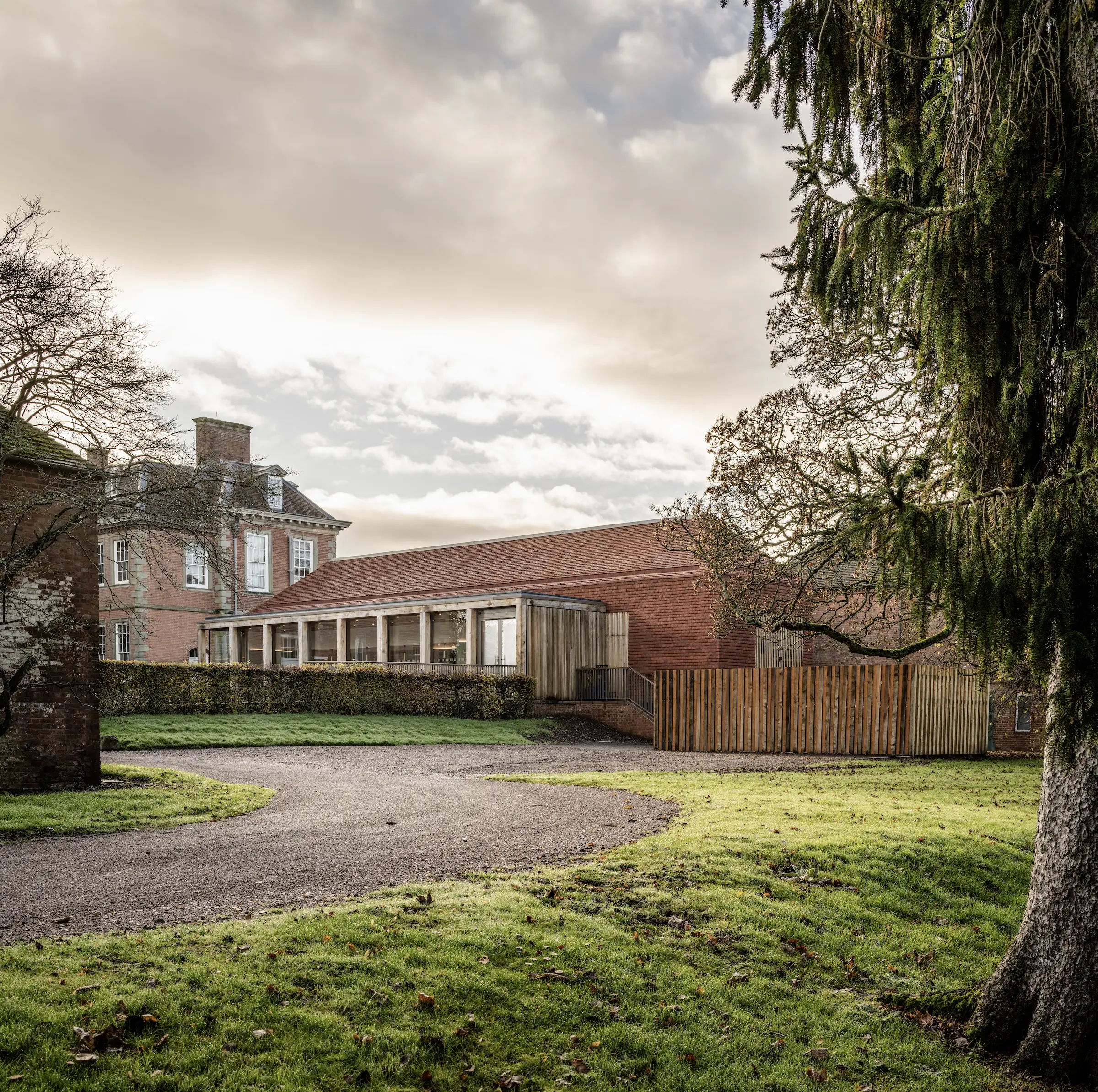
The café was built in response to a growing number of visitors to the historic estate. Photo © Greg Holmes
Today, Hanbury Hall is under the stewardship of the National Trust, which acquired it in the late 1960s when, in the absence of a male heir, the Vernon line was finally extinguished. Restored and revitalized, it now hosts torrents of day-trippers, beguiled by its William and Mary–style architecture, manicured gardens, and rolling acres.
Designed by Birmingham-based Howells, a new café pavilion adds a much-improved refreshment provision to the visitor experience. Conjoined by a neat glazed link, the new building extends at right angles from the rear of the Hall to form the third side of a paved courtyard. A long, low bar is capped by a hipped roof that echoes the form and proportions of the restored stables wing opposite. The scheme reinstates a previously blocked archway in the stables to frame views out over lush parkland from the café and courtyard.
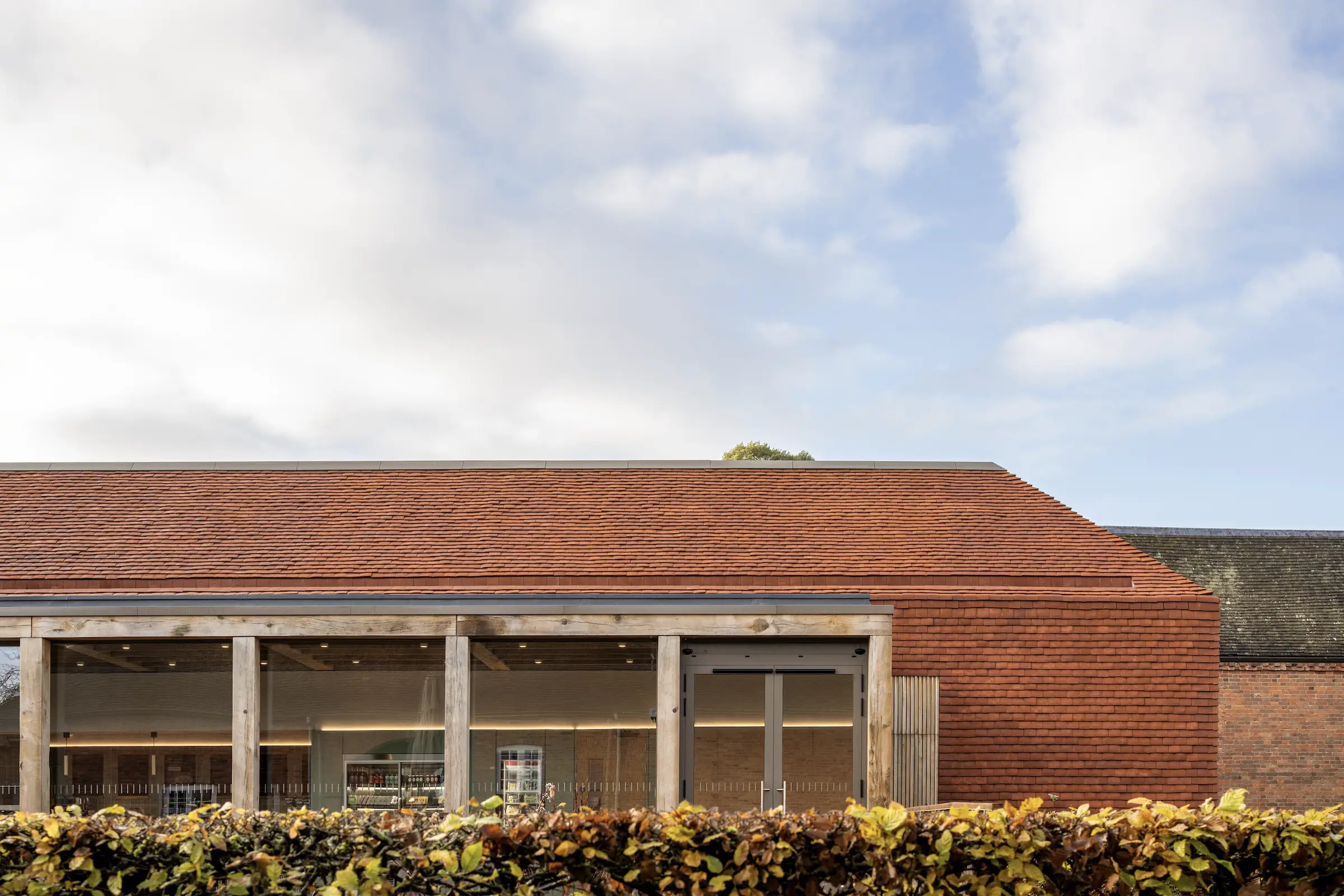
The pavilion is clad in handmade clay tiles. Photo © Greg Holmes
Resembling a kind of rustically Miesian pavilion, the café’s formal precision and exceptional construction quality are counterpointed by the warmth and tactility of natural materials. Thick, handmade clay tiles envelop the timber framed roof and walls in a homogeneous skin of russet scales. “You can see the handprints of the makers on the backs of the tiles,” says Tom Shenton, one of the project architects. “It connects you with the human element in the fabrication process.”
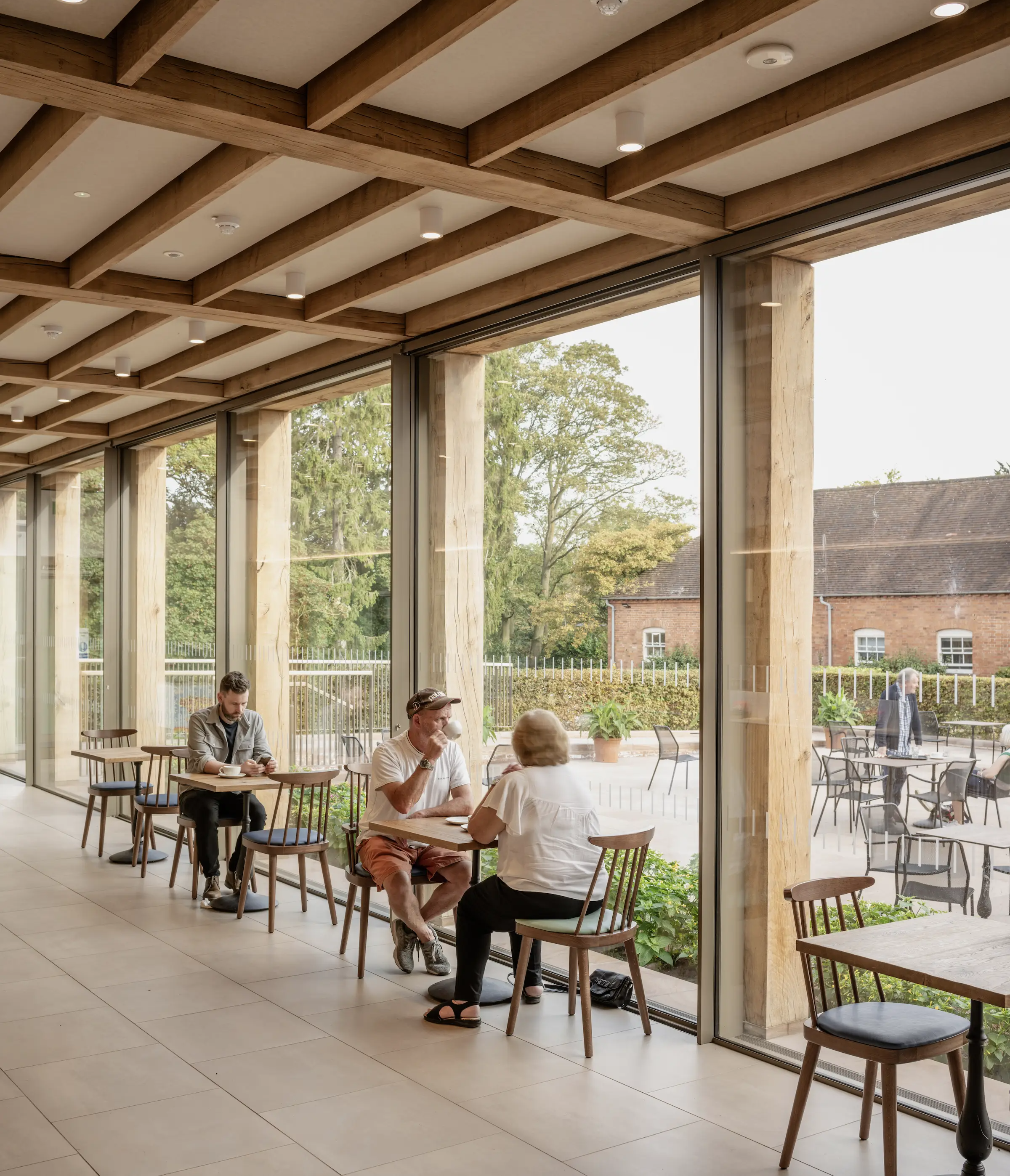
1
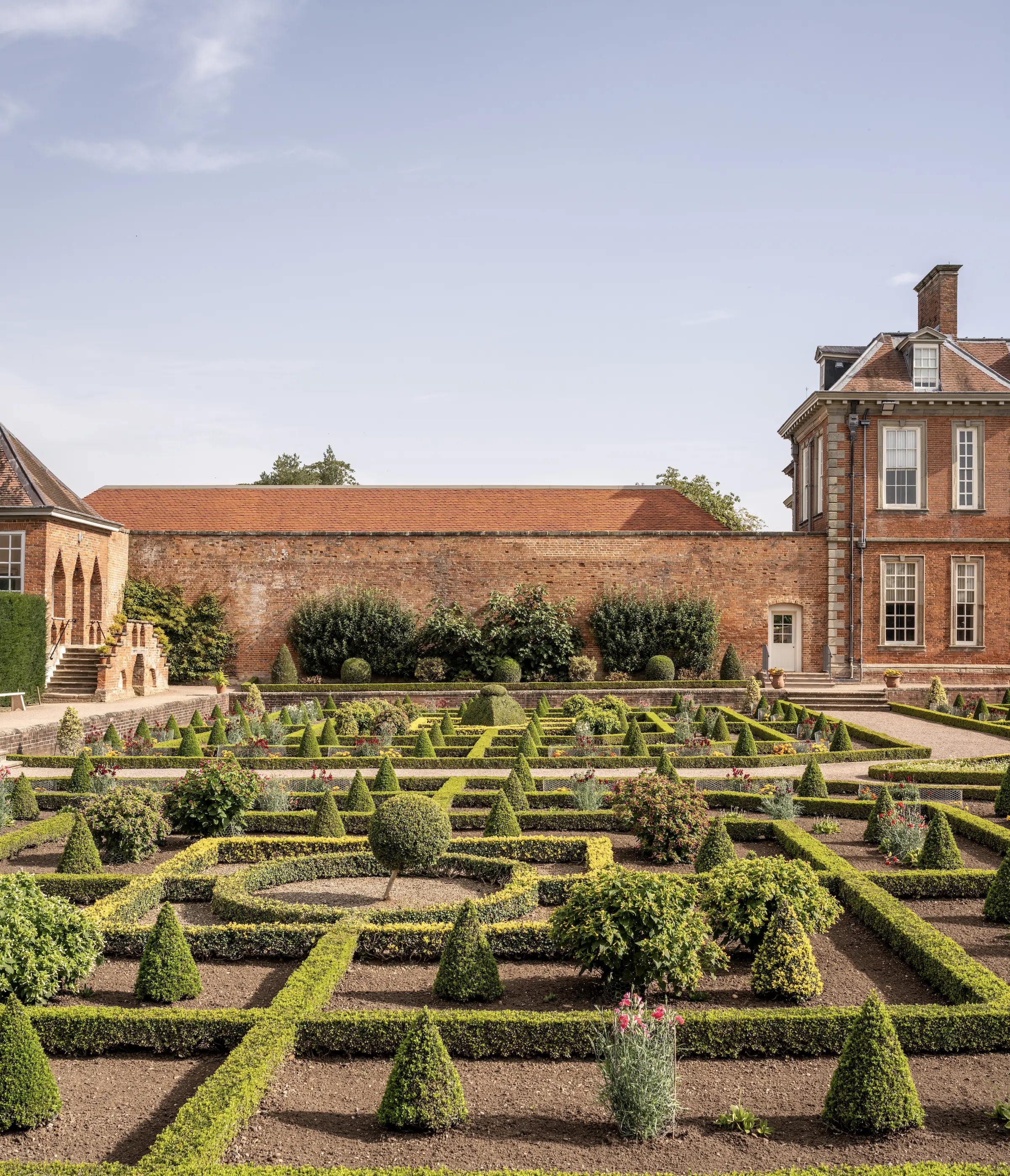
2
View inside the Courtyard Kitchen (1), which features a menu showcasing produce grown on-site at the estate; the hipped roof of the new pavilion is visible behind a historic garden wall (2). Photos © Greg Holmes
The courtyard side features a glazed portico, with glass panels set in sturdy frames of oak sourced from the National Trust’s nearby Brockhampton Estate. Already, the untreated oak is weathering to a delicate silvery grey, mirroring the stone dressings on the Hall’s brickwork. You can imagine the scene coming to life in warmer months, when the glass panels are slid back to open up the café to the courtyard. On the non-courtyard side, the building abuts a walled parterre garden, its hipped roof discreetly peeking up over the enclosing historic wall, looking as though it had always been there.
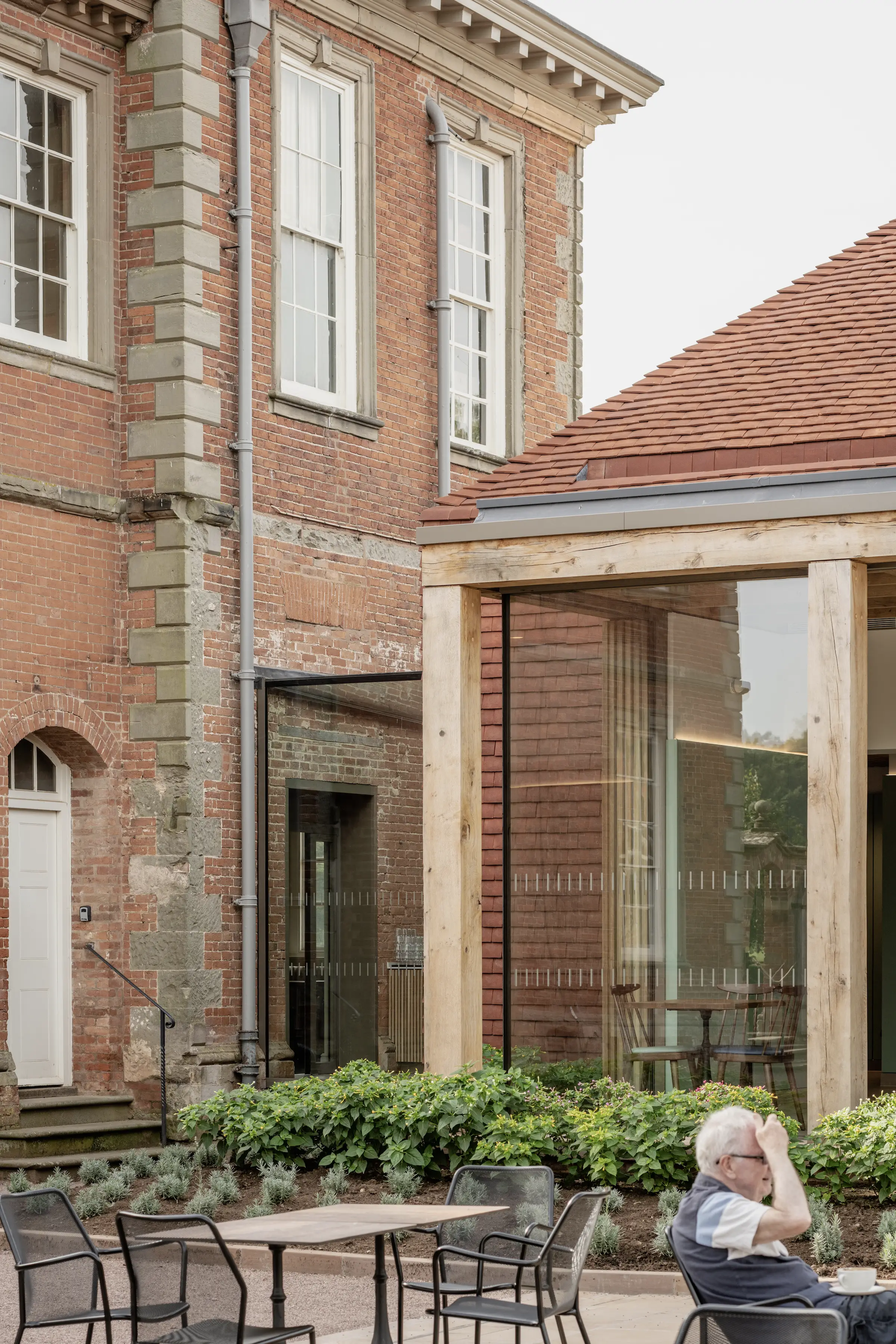
3
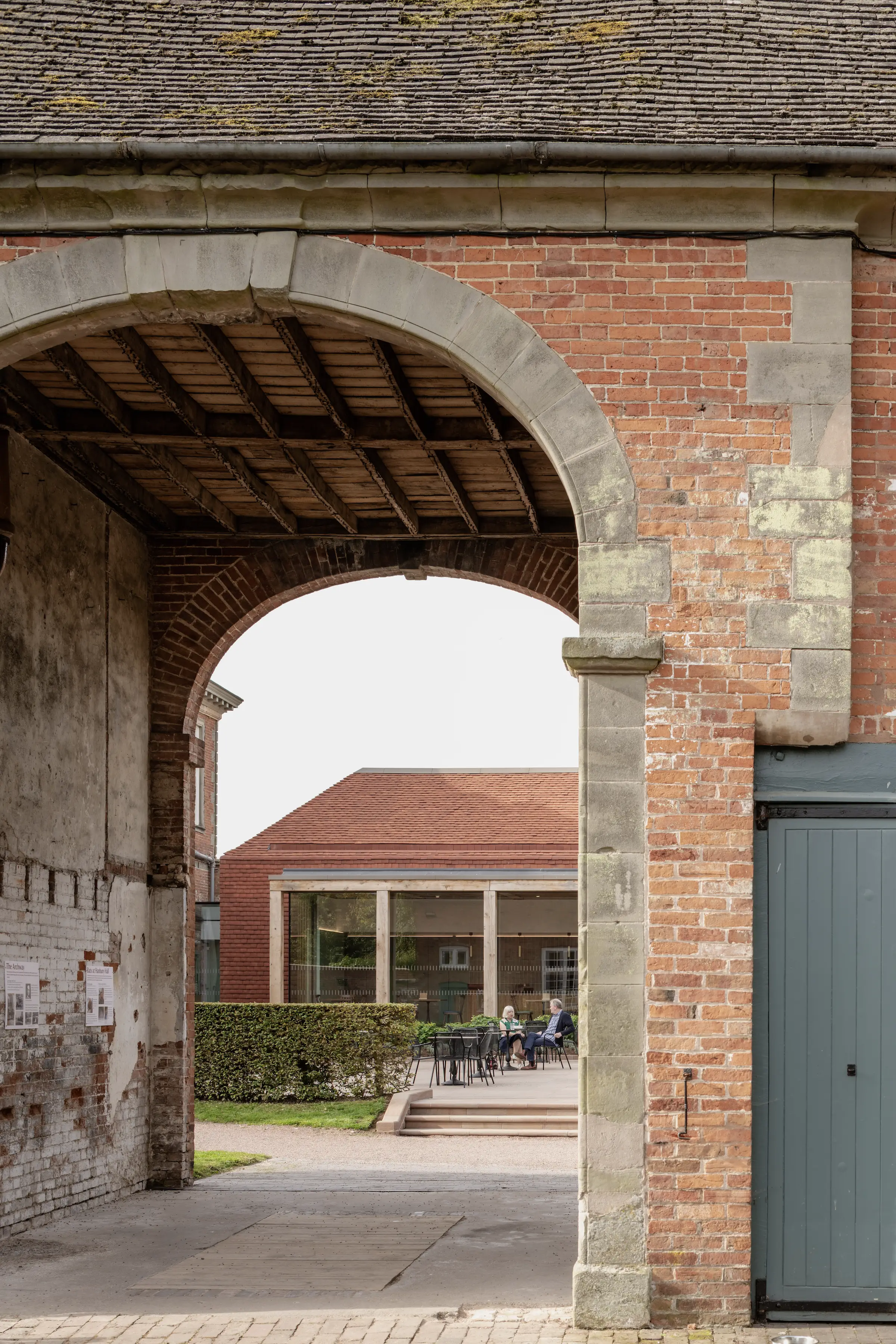
4
The pavilion, designed to meet modern accessibility requirements, is connected to the Hall via a glazed link (3). View of the new addition through a previously blocked archway (4). Photos © Greg Holmes
The interior takes its cue from the Hall’s paneled rooms, with a palette of painted wainscotting, exposed timber beams, and sage green tiles. Ceiling and floor grids are scrupulously coordinated and the scheme’s attention to detail also extends to how menus and signage fit within the tiling grid, as well as the optimum number of cake stands that can be accommodated on the serving counter.
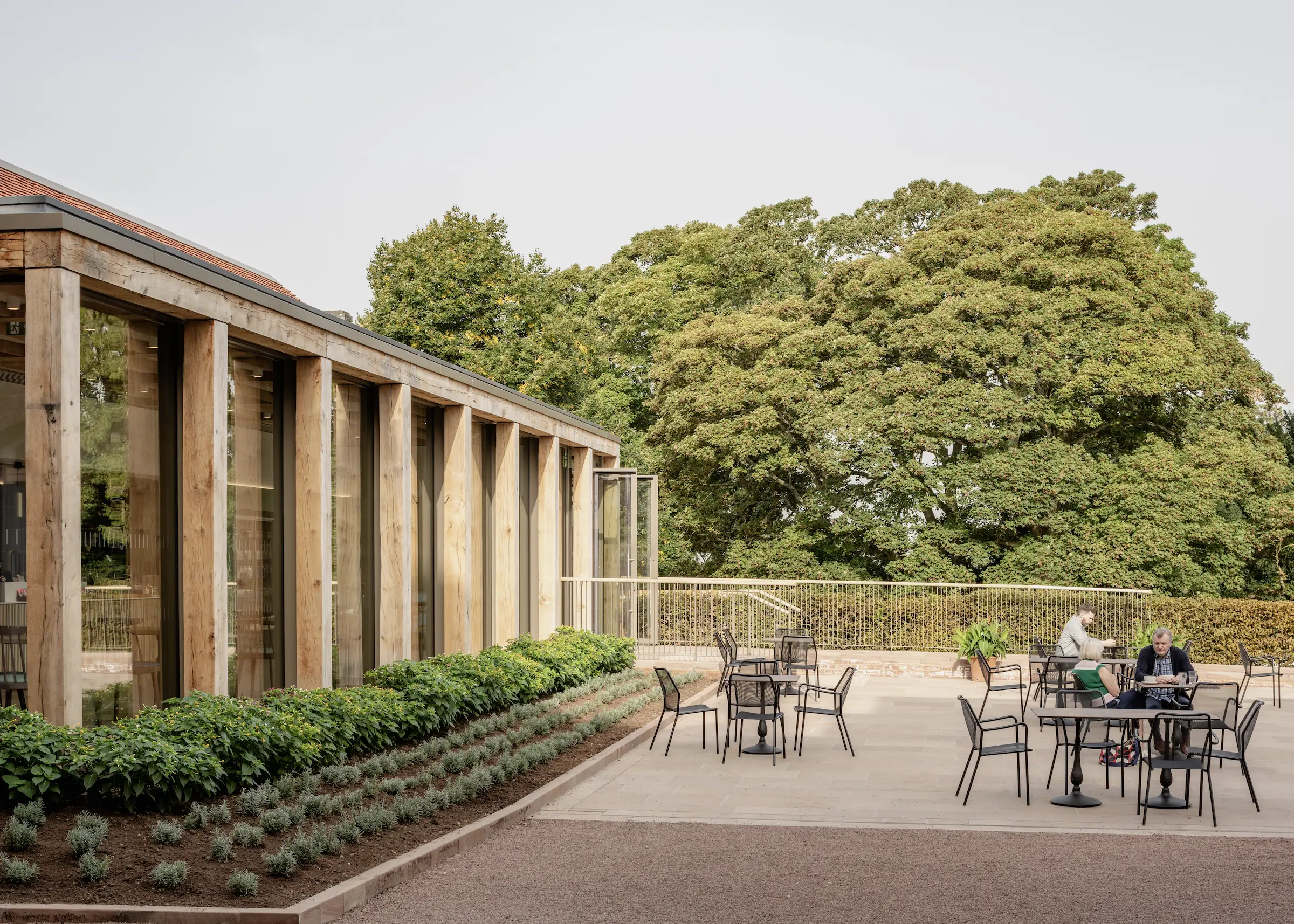
On sunny days, guests can dine al fresco in the café's namesake courtyard. Photo © Greg Holmes
Clearly, it helps that the National Trust is a supportive, enlightened, and invested client, but the project still embodies thoughtfulness, modesty, and a sense of doing simple things well. Quintessentially English, you might say.



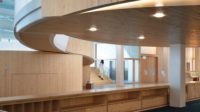
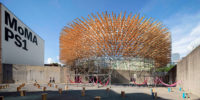
Post a comment to this article
Report Abusive Comment